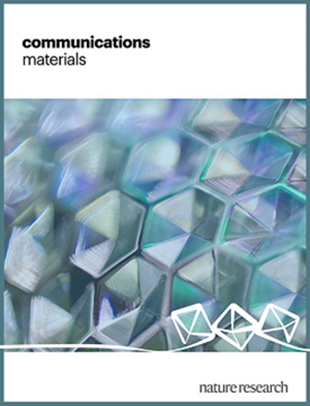Strategies to achieve reproducible synthesis of phase-pure Zr-porphyrin metal-organic frameworks
IF 9.6
Q1 MATERIALS SCIENCE, MULTIDISCIPLINARY
引用次数: 0
Abstract
Porphyrin-based metal-organic frameworks (MOFs) are gaining traction for various applications due to their sorption, optoelectronic and catalytic properties. MOFs with Zr-based nodes constitute a particularly robust and versatile class of MOFs in which incorporation of metals into the porphyrin core allows further tuning of their physico-chemical properties. However, significant challenges regarding the phase-pure synthesis of Zr-porphyrin MOFs have slowed down progress in the field. Synthetic challenges in targeted phase formation originate from the densely populated phase space, due to energetically similar framework topologies accessible from the same building blocks, but also from the lack of detailed synthetic information. This Perspective discusses different synthetic approaches and detailed synthesis investigations to gain a deeper understanding while providing strategies towards suitable conditions to access phase-pure Zr-porphyrin MOFs. Transparent data reporting and holistic consideration of synthetic factors may allow for better control of these aspects. This is crucial for the establishment of structure–property relationships in such materials and will facilitate the realisation of their application potential. Synthesizing phase-pure zirconium-porphyrin metal-organic frameworks is challenging. This Perspective discusses different synthetic approaches and investigations to guide conditions to achieve phase-pure zirconium-porphyrin metal-organic frameworks.

实现相纯zr -卟啉金属-有机骨架可重复合成的策略
基于卟啉的金属有机骨架(MOFs)由于其吸附、光电和催化性能而得到了广泛的应用。具有zr基节点的mof构成了一种特别坚固和通用的mof,其中将金属掺入卟啉核心可以进一步调整其物理化学性质。然而,关于相纯合成zr -卟啉mof的重大挑战减缓了该领域的进展。目标相形成的合成挑战源于密集的相空间,由于从相同的构建块可获得能量相似的框架拓扑,但也来自缺乏详细的合成信息。本展望讨论了不同的合成方法和详细的合成研究,以获得更深入的理解,同时提供了获得相纯zr -卟啉mof的合适条件的策略。透明的数据报告和综合因素的整体考虑可能有助于更好地控制这些方面。这对于在此类材料中建立结构-性能关系至关重要,并将促进其应用潜力的实现。相纯锆-卟啉金属-有机骨架的合成具有挑战性。本展望讨论了不同的合成方法和研究,以指导实现相纯锆-卟啉金属-有机框架的条件。
本文章由计算机程序翻译,如有差异,请以英文原文为准。
求助全文
约1分钟内获得全文
求助全文
来源期刊

Communications Materials
MATERIALS SCIENCE, MULTIDISCIPLINARY-
CiteScore
12.10
自引率
1.30%
发文量
85
审稿时长
17 weeks
期刊介绍:
Communications Materials, a selective open access journal within Nature Portfolio, is dedicated to publishing top-tier research, reviews, and commentary across all facets of materials science. The journal showcases significant advancements in specialized research areas, encompassing both fundamental and applied studies. Serving as an open access option for materials sciences, Communications Materials applies less stringent criteria for impact and significance compared to Nature-branded journals, including Nature Communications.
 求助内容:
求助内容: 应助结果提醒方式:
应助结果提醒方式:


